- Home
- George Sand
Valentine
Valentine Read online
ALSO BY GEORGE SAND
The Bagpipers
Indiana
The Intimate Journal
Leone Leoni
The Letters of Sand and Flaubert
Lucrezia Floriani
Mauprat
Winter in Majorca
Published by
Academy Chicago Publishers
363 West Erie Street
Chicago, IL 60610
Chronology © Academy Chicago Publishers 1977
First Printing 1978
Second Printing 1995
Chronology may not be reproduced in any form without the express written permission of the publisher.
Printed and bound in the USA.
Cover: Jean-Honore Fragonard, The Stolen Kiss, c. 1786-89.
Library of Congress Cataloging-in-Publication Data
Sand, George, pseud. of Mme. Dudevant, 1804-1876.
Valentine.
Reprint of the 1902 ed. published by G. Barrie, Philadelphia, as a volume The Masterpieces of George Sand.
I. Title.
PZ3.S21 Vol. 1978 [PQ2411] 843’.8 77-28026
ISBN 0-915864-59-2 pbk.
ISBN 0-915864-60-6 lib. bdg.
GEORGE SAND: CHRONOLOGY
1804
July 1: Birth at 15 rue Meslée, Paris, to Maurice Dupin and Sophie-Victoire Delaborde. Christened Amantine-Lucile-Aurore. Family moves to rue de la Grande-Batelière, Paris.
1808
Aurore travels to Spain with her mother. They join her father at the Palace de Godoy in Madrid where he is serving in Napoleon’s army under General Murat. The family travels to Nohant in France, the home of Maurice Dupin’s mother, born Marie-Aurore de Saxe, Comtesse de Horne, daughter of the illegitimate son of King Frederick-Augustus II of Poland.
Sept 16: Death of Maurice Dupin, age 30, in a fall from a horse.
1809
Feb 3: Sophie-Victoire gives custody of Aurore to Mme Dupin de Francueil, her mother-in-law, in return for payment of Maurice’s debts and a pension of 1000 francs a year.
1810-1814
Winters in Paris at rue Neuve-des-Mathurins with her grandmother. Visits from Sophie-Victoire. Summers at Nohant.
1818-1820
Educated at the English Convent des Augustines in Paris.
1820
Returns to Nohant. Studies with her father’s tutor, Deschartres. Rides horseback in male clothing.
1821
Death of Mme Dupin de Francueil. Aurore inherits money, a house in Paris and the house at Nohant.
1822
Moves in with her mother at 80 rue St-Lazare, Paris. April: Meets Casimir-François Dudevant, son of Baron Dudevant, on a visit to the Duplessis family.
September 10: Marries Dudevant. They move to Nohant in October.
1823
June 30: Maurice is born at Hôtel de Florence, 56 rue Neuve-des-Mathurins, Paris.
1824
Spring and summer at the Duplessis’ at Plessis-Picard near Melun; autumn at a Parisian suburb, Ormesson; winter in an apartment at rue du Faubourg-St Honoré.
1825
Spring at Nohant. Aurore is ill in the summer. Dudevants travel to his family home in Gascony. Vacation in the Pyrenees where she meets Aurélian de Sèze and recovers her health.
Nov 5: Writes long letter to Casimir confessing attraction to de Sèze. She gives him up. Winter in Gascony.
1827
Takes Stéphane de Grandsagne as lover. They meet in Paris.
1828
Sept 13: Birth of Solange.
1829
Writes Voyage en Auvergne, unpublished in her lifetime. Sees de Sèze.
1830
Visit to de Sèze in Bordeaux. Their correspondence ceases. She writes a novel, Aimée, which she later burns. Meets new lover, Jules Sandeau.
Dec: Discovers Casimir’s will, filled with antipathy toward her. Decides to separate from him, to spend half the year in Paris, leaving the children in Nohant.
1831
Jan 4: Moves to Paris, to 31 rue de Seine, to live secretly with Sandeau. Joins staff of Le Figaro. Writes three short stories: “La Molinara” (in Figaro), “La Prima Donna” (in Revue de Paris) and “La Fille d’Albano” (in La Mode).
April: Returns to Nohant for three months. Writes Indiana.
July: Moves to 25 Quai St-Michel, Paris.
Dec: Publishes Rose et Blanche in collaboration with Jules Sandeau. Book is signed Jules Sand.
1832
Travel between Paris and Nohant.
April: Brings Solange to Paris. Quarrels with Sandeau.
May: Indiana published.
Nov: Moves to 19 Quai Malaquais with Solange. Valentine published. Maurice sent by Casimir to the Lycée Henri Quatre in Paris.
1833
Breaks with Sandeau.
June: Meets Alfred de Musset.
Publishes Lélia.
Sept: To Fontainebleau with Musset.
Dec 10: To Italy with Musset.
Publishes novellas in various journals.
1834
Jan 19: Hotel Danieli in Venice. Musset attempts a break with Aurore, becomes ill. His physician is Pietro Pagello.
March 29: Musset returns to Paris. Aurore remains with Pagello. Publication of André, Mattéa, Jacques, Léone Léoni and the first Lettres d’un Voyageur.
July: Returns to Paris with Pagello.
Aug 24: Musset goes to Baden.
Aug 29: Aurore to Nohant.
Oct: Returns to Paris. Musset returns from Baden.
Pagello returns to Venice.
Nov 25: Begins journal to de Musset.
Dec: Returns to Nohant.
1835
Jan: Returns to Paris.
Mar 6: Final break with de Musset.
Meets Michel de Bourges, her lawyer and political mentor.
Writes Simon.
Autumn: Returns to Nohant for Maurice’s holiday.
Oct 19: Casimir threatens her physically. Begins suit for legal separation.
Dec 1: Judgment in her favor won by default.
1836
Feb 16: She wins second judgment. Casimir brings suit.
May 10, 11: Another verdict in her favor from civil court of La Chatre. Casimir appeals to a higher court.
July 25, 26: Trial in royal court of Bourges. Jury divided.
Out-of-court settlement. Her fortune is divided with Casimir.
Aug: To Switzerland with Maurice and Solange, Franz Liszt and Aurore’s friend Marie d’Agoult.
Autumn: Hôtel de la France, 15 rue Lafitte, Paris, with Liszt and d’Agoult. Meets Chopin.
1837
Jan: Returns to Nohant.
Publishes Mauprat in spring. Writes Les Maîtres Mosaïstes. Liszt and d’Agoult visit Nohant. Fatal illness of Sophie-Victoire in Paris. Visit to Fontainebleau. Writes La Dernière Aldini. Trip to Gascony to recover Solange, who has been kidnapped by Casimir.
1838
Writes L’Orco and L’Uscoque, two Venetian novels.
May: To Paris. Romance with Chopin.
Nov: Trip to Majorca with children and Chopin.
Writes Spiridion. La Dernière Aldini published.
1839
Feb: Leaves Majorca for three months in Marseilles. Then to Nohant.
Publishes L’Uscoque, Spiridion and revised Lelia.
Oct: Occupies adjoining apartments with Chopin until spring of 1841 at 16 rue Pigalle, Paris. Summer is spent at Nohant, with Chopin as guest.
1840
Writes Le Compagnon du Tour de France and Horace. Influenced by Pierre Leroux. Publication of Gabriel, Cosima, a novel based on her play.
1841
Moves from rue Pigalle to 5 and 9 rue St-Lazare, Square d’Orléans, with Chopin. Publication of Pauline.
&nbs
p; 1842
Vols 1 and 2 of Consuelo published, and Horace. Chopin and Delacroix at Nohant. Publishes Un Hiver à Majorque.
1843
Vols 3-4 of Consuelo published, along with Fanchette and vols 1-2 of La Comtesse de Rudolstadt, the sequel to Consuelo.
1844
Jeanne published, first of the pastoral novels. Also the last vols of La Comtesse de Rudolstadt. Established liberal newspaper L’Éclaireur. Writes articles on Politics and Socialism.
1845
Publishes Le Meunier d’Angibault.
1846
Publishes La Mare au Diable, second pastoral novel, Isidoro, and Teverino.
1847
Solange marries Auguste-Jean Clésinger. Estrangement from Chopin, who has sided with Solange in a family quarrel, and whose health is deteriorating. Lucrezia Fioriani, Le Péché de M. Antoine and Le Piccinino published.
1848
On behalf of the Second Republic, writes government circulars, contributes to Bulletins de la République and publishes her newspaper La Cause du Peuple. Death of Solange’s newborn daughter.
1849
La Petite Fadette published. Birth of Solange’s daughter Jeanne-Gabriel. François le Champi successfully performed as a play at the Odèon theater in Paris.
1850
Begins liason with Alexandre Manceau, Maurice’s friend. François le Champi published as both play and novel.
1851
Republic falls. Plays Claudie and Le Manage de Victorine published.
1852
Uses her influence with Louis Napoleon to save her friends from political reprisal. Solange and her husband quarrel, leave Jeanne-Gabriel with Sand at Nohant.
1853
Death of Michel de Bourges. Les Maîtres Sonneurs, La Filleule, Mont-Revêche published.
1854
Clésingers officially separated. Vols 1-4 of Histoire de Ma Vie, Adriani and Flaminio published.
1855
Jan 13: Deat hof Jeanne-Gabriel at school. Visit to Italy with Maurice and Alexandre Manceau. Vols 5-20 of Histoire de Ma Vie published.
1856
Does French adaptation of As You Like It.
1857
Death of Musset. Manceau buys cottage at Gargilesse for himself and Sand. Le Diable aux Champs and La Daniella published.
1858
Holidays at Gargilesse on River Creuse, 30 miles from Nohant, with Monceau. Les Beaux Messieurs de Bois-Doré published and Légendes Rustiques, illustrated by Maurice.
1859
Publishes Elle et Lui, L’Homme de Neige, Les Dames Vertes, Promenades Autour d’un Village, La Guerre and Garibaldi.
1860
Writes La Ville Noire and Marquis de Villemer.
Nov: Contracts typhus or typhoid fever.
1862
Marriage of Maurice to Caroline Calametta. Autour de la Table, Souvenirs et Impressions Littéraires published.
1863
Marc-Antoine Dudevant born, son of Maurice and Caroline. Manceau and Maurice quarrel. Mademoiselle La Quintinie and Pourquoi les Femmes à l’Académie? published.
1864
Death of Marc-Antoine Dudevant. Play Le Marquis de Villemer presented. Moves from 3 rue Racine near the Odéon to 97 rue des Feuillantines. Leaves Nohant, because of difficulties with Maurice, to stay at Palaiseau with Manceau.
1865
Aug 21 : Death of Manceau from tuberculosis, at Palaiseau. La Confession d’une Jeune Fille and Laura published.
1866
Birth of Aurore Dudevant to Maurice and Caroline. Visits Flaubert at Croisset, dedicates Le Dernier Amour to him. Monsieur Sylvestre published.
1867
Return to Nohant. Publishes Le Dernier Amour.
1868
Birth of Gabrielle Sand Dudevant.
1870
Play L’Autre with Sarah Bernhardt. Pierre Qui Roule, Le Beau Laurence and Malgré Tout published.
1871
Death of Casimir Dudevant. Seige of Paris. Sand protests Paris Commune. Césatine Dietrich and Journal d’un Voyageur pendant la Guerre published.
1872
Turgenev visits Nohant. Francia and Nanon published.
1873
Flaubert and Turgenev at Nohant. Travels in France. Impressions et Souvenirs and Contes d’une Grand-mère published.
1874
Ma Soeur Jeanne published.
1875
Flamande and Les Deux Frères published.
1876
June 8: Death of George Sand. Le Tour de Percemont and Marianne Chevreuse published.
I
In the southeastern part of Berri there is a peculiarly picturesque bit of country some three or four leagues in extent. As the highroad from Paris to Clermont, which passes through it, is thickly settled on both sides, it is difficult for the traveller to suspect the beauty of the country near at hand. But he who, seeking shade and silence, should turn aside into one of the winding roads, enclosed between high banks, which branch off from the main highway at every moment, would soon see before him a cool and tranquil landscape, fields of a delicate green, melancholy streamlets, clumps of alders and ash trees—a delicious pastoral scene. In vain would he seek within a radius of several leagues a house built of stone or with a slated roof. At rare intervals a tiny thread of blue smoke, rising slowly above the foliage, would announce that a thatched roof was near at hand ; and if he should spy above the walnut trees on the hill the weather vane of a little church, a few steps farther on he would come upon a bell-tower sheathed in moss-covered tiles, a dozen scattered cottages surrounded by their orchards and their hemp-fields, a brook with its bridge formed of three pieces of timber, a cemetery a few rods square, enclosed by a quick-set hedge, five elms arranged in a quincunx and a ruined tower. This is what is called in the province a bourg.
There is nothing like the absolute repose of those unknown regions. Luxury has not found its way thither, nor the arts, nor the mania for scientific investigation, nor the hundred-armed monster called industry. Revolutions are hardly perceptible there, and the last war of which the soil retains a barely perceptible trace is that between Huguenots and Catholics ; and, even of that, the tradition is so uncertain and so faint that if you should question the natives, they would reply that those things took place at least two thousand years ago; for the principal virtue of that race of tillers of the soil is heedlessness in the matter of antiquities. You can travel all over their domains, pray before their saints, drink from their wells, without ever running the risk of having to listen to the usual feudal chronicles or the indispensable miraculous legend. The grave and silent disposition of the peasant is not one of the least potent attractions of that region. Nothing surprises him, nothing attracts him. Your chance presence in his pathway will not even make him turn his head, and, if you ask him to direct you to a town or a farm, his sole response will be a condescending smile, as if to prove to you that he is not deceived by your pleasantry. The peasant of Berri cannot understand how a man can walk without knowing where he is going. His dog will hardly deign to bark after you; his children will hide behind the hedge to evade your eyes or your questions, and the smallest of them, if he has not been able to follow his brothers in their flight, will throw himself into the ditch from fright, shrieking with all his strength. But the most impassive countenance will be that of a great white ox, the inevitable dean of every pasture, who, staring fixedly at you from among the bushes, will seem to hold in check the less solemn and less kindly disposed family of frightened bulls.
Aside from this initial coldness to the overtures of the stranger, the husbandman of that region is pleasant and hospitable, like his peaceful glades, like his aromatic meadows.
A particular tract of land between two small streams is especially remarkable for the healthy dark hues of its vegetation, which have caused it to be called the Black Valley. It is peopled only by scattered cottages and a few farms which yield a good revenue. The farm called Grangeneuve is of considerable size, but
in the simplicity of its aspect there is nothing at variance with that of its surroundings. An avenue of maples leads to the house, and at the foot of the rustic buildings the Indre, in that place nothing more than a babbling brook, flows peacefully among the rushes and yellow irises of the meadow.
The first of May is a day of excitement and merrymaking for the people of the Black Valley. At its farther end, about two leagues from its centre, where Grangeneuve is situated, there is held one of those rustic fêtes which in every province bring together all the people of the neighborhood, from the sub-prefect of the department to the pretty grisette who has plaited that functionary’s shirt-frill on the preceding day ; from the noble châtelaine to the little shepherd—pâtour is the local word—who pastures his goat and his sheep at the expense of the seignioral hedges. They all come to eat and dance on the grass, with more or less appetite, more or less enjoyment ; they all exhibit themselves in calèches or on donkey-back, in caps or Italian straw hats, in clogs of poplar-wood or slippers of Turkish satin, in silk dresses or drugget skirts. It is a red-letter day for the pretty girls, a day of retribution for beauty, when the somewhat problematical charms of the salons are summoned forth into the bright sunlight, to compete with the vigorous health and blooming youth of the village maidens ; when the masculine areopagus is made up of judges of all ranks, and the contending parties are brought face to face, amid the dust and under the blaze of keen glances, while the violins are playing. Many righteous triumphs, many well-merited reparations, many long contested judgments, make the day of the fête champêtre memorable in the annals of coquetry ; and the first of May was, in the Black Valley as elsewhere, a great subject of secret rivalry between the peasant women in their Sunday clothes and the ladies of the neighboring town.
But it was at Grangeneuve that the most formidable arsenal of these artless fascinations was prepared for use early in the morning. It was in a large, low room, lighted by small-paned windows ; the walls were covered with a gaudy-hued paper, which clashed with the blackened beams of the ceiling, the solid oak doors, and the common clothes-press. In that imperfectly decorated apartment, where the classic rusticity of its primitive condition was emphasized by some handsome modern furniture, a lovely girl of sixteen stood before the scalloped gilt frame of an old mirror which seemed to lean forward to admire her, giving the last touches to a costume more gorgeous than refined. But Athénaïs, the honest farmer’s only heir, was so youthful, so rosy, so delicious to look upon, that she seemed graceful and natural even in her borrowed finery. While she arranged the folds of her tulle dress, madame her mother was stooping in front of the door, with her sleeves rolled up to the elbow, preparing in a huge kettle some sort of a compound of bran and water, about which a demi-brigade of ducks stood in good order, in an ecstasy of anticipation. A bright and joyous sunbeam entered through the open door, and fell upon the gayly bedecked maiden, rosy-cheeked and dainty, so different from her buxom, sunburned, homespun-clad mother.

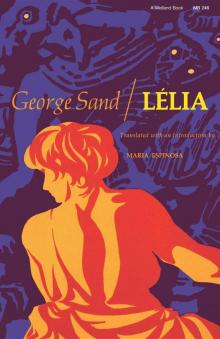 Lelia
Lelia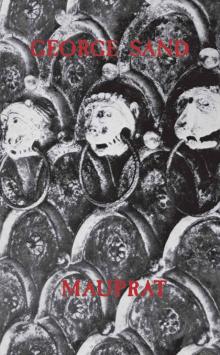 Mauprat
Mauprat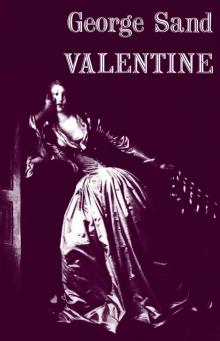 Valentine
Valentine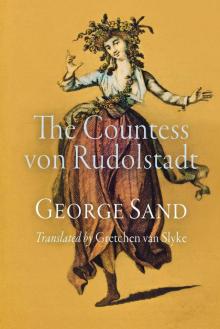 The Countess von Rudolstadt
The Countess von Rudolstadt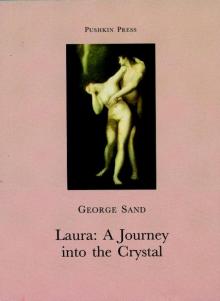 Laura
Laura Indiana (Oxford World's Classics)
Indiana (Oxford World's Classics)